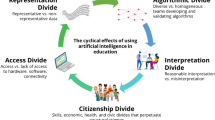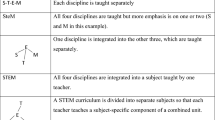Abstract
The 2014, 41st Australian Association for Research in Education (AARE) presidential address is both inspired and guided by the discursive genres of presidential addresses and the role of the president in a member association such as AARE. In the address, typically the president speaks to the members on an issue or issues that are to shape or conclude their term of office, as it is in my case. Like many of the 40 AARE presidents who have gone before me, I will embed some things that are professional, personal and political—not in the interests of advancing my research agenda, but to add “to the weave and pattern of the association’s history” (Reid 2010, p. v). Threads of my research since completing my PhD in 2000 will appear to support the broad argument. Also, I will draw on the outcomes of the 2014 Australian Research Council Discovery round (see Australian Research Council: ARC archives 2016) to encapsulate my key argument that educational research and its (ex)changes are being reshaped: in a post human digital age, the tree of knowledge is mutating. To make my argument, I will review how the thinking and doing of educational research mid-way through the second decade of the twenty-first century is constructed and ask what research endeavours might be created to make the best possible worlds for our member community and the aspirations of the association.












Similar content being viewed by others
Notes
I have elected to capitalise the two words Big Data (BD) to convey that there is much shouting and shouting out about these two words in the academy and the everyday.
I would like to acknowledge the support of the AARE SIG convenors, the executive, past presidents, members and non-member conference attendees for their contribution to my term of office during 2013–2014. Reflections on my term of office highlight generosity, passion and productivity as hallmarks of the AARE community.
In 2014 alone there were presentation listings that run to 17 A4 pages available for review on the ARC website, see http://archive.arc.gov.au/file-search/Media_Centre?level_1=Media%20Centre&level_2=Presentations&level_3=2014&sort=asc&order=Document%20Name)
Type the author name Manuel Lima and The Book of Trees (2014) into your search engine and highlight images to view a snapshot of the book and the numerous reviews of the work which are detailed on blog sites.
The study was funded by an Australian Research Council Grant in partnership with the Victorian Department of Education and Training (DET), the non-for-profit foundation Together for Humanity (TFH), the Victorian Curriculum and Assessment Authority (VCAA) and Pukunui Technology (ARCLP 120200319).
Haraway (1991) constructs the noisy little analytical machine as something that“... works almost like the dichotomous systems of European Renaissance rhetoricians, such as Peter Rasmus to persuade, teach and taxonomize simultaneously by means of analytical technology that palpably makes it objects simultaneously with bisecting them…Noting this tradition does not invalidate its use; it locates its use and insists on partiality and accountability. The difference is important. Binaries, rather suspect for feminists I know can turn out to be nice little tools from time to time” (Haraway 1991, p. 111).
References
Aranda, G. (2014). Pozible project. Retrieved October 14, 2015 from http://www.pozible.com/project/187468.
Australian Government and Australian Research Council (2015). State of Australian University Research 2015–16 Volume 1 ERA National Report. Canberra: Commonwealth of Australia.
Australian Research Council: ARC archives (2016). Retrieved June 10, 2016 from http://archive.arc.gov.au/file-search/Funded_Research?level_1=Funded%20Research&level_2=1%20Discovery%20Programme&level_3=Discovery%20Projects&level_4=2014&sort=asc&order=Document%20Name.
Bartlett, L. (2010). New and old testaments of alliance in educational research. In T. Gale & B. Lingard (Eds.), Educational research by association: AARE presidential address in the field of educational research (pp. 59–78). Rotterdam: Sense Publishers.
Bourdieu, P., & Wacquant, L. (1992). An introduction to reflexive sociology. Cambridge: Polity Press.
Boyd, D., & Crawford, K. (2012). Critical questions for Big Data. Information, Communication and Society, 15(5), 662–679. doi:10.1080/1369118X.2012.678878.
Braidotti, R. (2013). The posthuman. Cambridge, UK: Policy Press.
Byrne, A. (2014). Field of Research Network Mapping Australian Research Council, slide 32, reproduced with permission. Retrieved June 10, 2016 from http://archive.arc.gov.au/file-search/Media_Centre?level_1=Media%20Centre&level_2=Presentations&level_3=2014&sort=asc&order=Document%20Name. Link ptx 20141028&30_DVCsR-byrne.
Cope, B., & Kalantzis, M. (2015). Interpreting evidence-of-learning: Educational research in the era of big data. Open Review of Educational Research, 2(1), 218–239. doi:10.1080/23265507.2015.1074870.
Deleuze, G. (1998). Foucault (S. Hand, Trans.). London: University of Minnesota Press.
Ericsson, L. M. (2014). The impact of datafication on strategic landscapes LME-14:001164 Uen © Telefonaktiebolaget LM Ericsson. Retrieved June 10, 2016 from https://www.google.com.au/search?q=The+impact+of+datafication+on+strategic+landscapes+LME-14%3A001164+Uen+%C2%A9&sourceid=ie7&rls=com.microsoft:en-AU:IE-Address&ie=&oe=&gfe_rd=cr&ei=TifNV-DIItDN8gekl7PIDw&gws_rd=ssl.
Graham, L., & Buckley, L. (2014). Ghost hunting with lollies, chess and Lego: appreciating the ‘messy’ complexity (and costs) of doing difficult research in education. Australian Educational Researcher, 41(3), 327–347.
Green, B. (2010). Knowledge, the future, and education(al) research: A New-Millennial challenge. The Australian Educational Researcher, 37(4), 43–62.
Halse, C., Mansouri, F., Arrowsmith, C., Moss, J., Arber, R., Denson, N., Priest, N. & O’Mara, J. (2011). Doing diversity: Intercultural understanding in primary and secondary schools. Australian Research Council Linkage Grant Website. Retrieved June 10, 2016 from http://interculturalunderstanding.org.
Halse, C., Mansouri, F., Arrowsmith, C., Moss, J., Arber, R., Denson, N., Priest, N. & O’Mara, J. (2015). Doing diversity: Intercultural understanding in primary and secondary schools, final report. Burwood: Deakin University.
Haraway, D. (1991). Simians, Cyborgs, and women. The reinvention of nature. London: Routledge.
Haraway, D. (1997). Modest_Witness@Second_Millennium.FemaleMan©_Meets Oncomouse™. London: Routledge.
Haraway, D. (2004). Ecce homo, Ain’t (Ar’n’t) I a woman, and Inapproriate/d others: The human in a post-human landscape. The Haraway Reader (pp. 47–62). Routledge: London.
Kemmis, S., & Grootenboer, P. (2008). Situating praxis in practice: Practice architectures and the cultural, social and material conditions for practice. In S. Kemmis & T. J. Smith (Eds.), Enabling Praxis: Challenges for education (pp. 37–64). Rotterdam: Sense.
Labaco, T. (2013). Out of hand: Materialising the post digital. London: Black Dog Publishing.
Lather, P. (1991). Getting smart: Feminist research with/in the postmodern. New York: Routledge.
Lather, P., & St. Pierre, E. A. (2013). Post-qualitative research. International Journal of Qualitative Studies in Education, 26(6), 629–633.
Lima, M. (2014). The book of trees. New York: Princeton Architectural Press.
Lindstrom, M. (2016). Small data: The tiny clues that uncover the huge trends. London: Hodder and Staunton, John Murray Learning.
Lingard, B. (2014). Politics, policies and pedagogies in education. The selected works of Bob Lingard. Oxon: Routledge.
Lingard, B., & Gale, T. (2010). Defining educational research: a perspective of/on presidential addresses and the Australian Association for Research in Education. Australian Educational Researcher, 37(1), 21–49.
Loukissas, L. A. (2016). Taking Big Data apart: local readings of composite media collections. Information, Communication & Society,. doi:10.1080/1369118X.2016.1211722.
Luhmann, N. (2012). Theory of society. Stanford: Stanford University Press.
Madsen, D., & Stenheim, T. (2016). Big Data viewed through the lens of management fashion theory. Cogent Business & Management, 3, 1165072. doi:10.1080/23311975.2016.1165072.
Mayer-Schönberger, V., & Cukier, K. (2013). Big Data: A revolution that will transform how we live, work and learn. London: John Murray.
McCosker, A., & Wilkin, R. (2014). Rethinking ‘Big Data’ as visual knowledge: The sublime and the diagrammatic in data visualisation. Visual Studies, 29(2), 155–164.
McFadden, D. (2013). Out of hand: Materializing the postdigital. New York: New York Museum of Art and Design.
Moss, J. (2011). Understanding visual and intertextual approaches in pedagogical and curriculum research: A pretext. International Journal of Inclusive Education, 15(4), 379–388.
Moss, J., O’Mara, J., & McCandless (2016). School leadership and intercultural understanding: Entrances and foyers as sites of knowing. International Journal of Inclusive Education, Under review.
Moss, J., & Pini, B. (2016). Visual methods and educational research. Hampshire: Palgrave Macmillan.
OECD (2014). Education at a Glance 2014: OECD Indicators. OECD Publishing. Retrieved June 10, 2016 from http://dx.doi.org/10.1787/eag-2014-en.
Pini, B., & Moss, J. (2016). Conclusion. In J. Moss & B. Pini (Eds.), Visual methods and educational research (pp. 267–275). Hampshire: Palgrave Macmillan.
Reid, J. (2010). Foreword. In T. Gale & B. Lingard (Eds.), Educational research by association: AARE presidential addresses and the field of educational research. Rotterdam: Sense Publishers.
Rose, G. (2014). On the relation between ‘visual research methods’ and contemporary visual culture. Sociological Review, 62(1), 24–46.
Sahlberg, P., & Hasak, J. (2016). Data was supposed to fix education. Retrieved June 10, 2016 from https://www.washingtonpost.com/news/answer-sheet/wp/2016/05/09/big-data-was-supposed-to-fix-education-it-didnt-its-time-for-small-data/.
Selwyn, N., & Facer, K. (2014). The sociology of education and digital technology: Past present and future. Oxford Review of Education, 40(40), 482–496.
Smith, D. E. (1990). Texts, facts and femininity. London: Routledge.
Thomson, P., & Blackmore, J. (2006). Beyond the power of one: redesigning the work of school principals. Journal of Educational Change, 7(3), 161–177.
Torrance, H. (2012). Triangulation, respondent validation, and democratic participation in mixed methods research. Journal of Mixed Methods Research, 6(2), 111–123.
Tufte, E. (1997). Visual explanations: Images and quantities, evidence and narrative. Cheshire, CT: Graphic Press.
Turkle, S. (2007). Evocative objects: Things we think with. Cambridge, MA: The MIT Press.
Turner, G., & Brass, K. (2014). Mapping the humanities, arts and social sciences in Australia. Canberra: Australian Academy of the Humanities.
Williamson, B. (2016). Digital education governance: data visualization, predictive analytics, and ‘real-time’ policy instruments. Journal of Education Policy., 31(2), 123–141. doi:10.1080/02680939.2015.1035758.
Yates, L., Bond, L., Dixon, M., Drew, S., Ferguson, P., Hay, T., Moss, J., St Leger, P., Walker, H. & White, J. (2010). Keeping Connected: Identity, social connection and education for young people living with chronic illness. Melbourne: Melbourne Graduate School of Education, The University of Melbourne.
Acknowledgments
Taking an embodied address to a written paper requires writing that is recrafted and reviewed. I would like to acknowledge the contribution of two outstanding scholars and colleagues: Dr Radhika Gorur, Senior Lecturer at Deakin University, and Professor Pat Thompson, Convenor of the Centre for Research in Arts, Creativity and Literacy (CRACL) from the University of Nottingham, who provided clear and assiduous advice on the ‘how to’ and revision of this text. Associate Professor Linda Graham as Editor of Australian Educational Researcher was patient and persistent in ensuring that I got the paper into press and added to the AARE record.
Author information
Authors and Affiliations
Corresponding author
Rights and permissions
About this article
Cite this article
Moss, J. 2014 Australian Association for Research in Education Presidential Address. Aust. Educ. Res. 43, 505–525 (2016). https://doi.org/10.1007/s13384-016-0215-6
Received:
Accepted:
Published:
Issue Date:
DOI: https://doi.org/10.1007/s13384-016-0215-6




